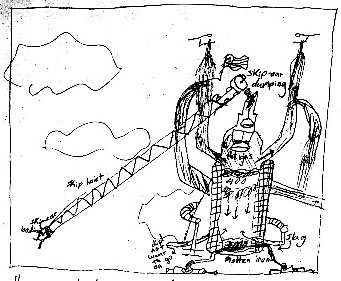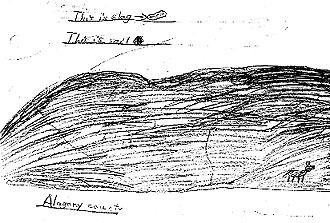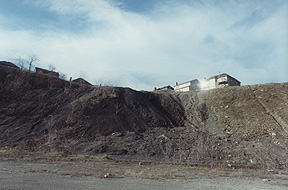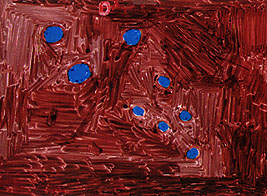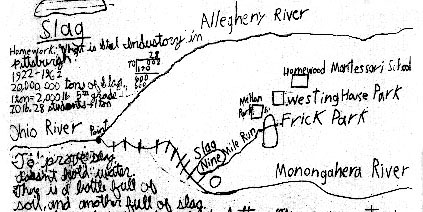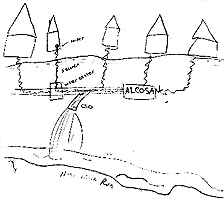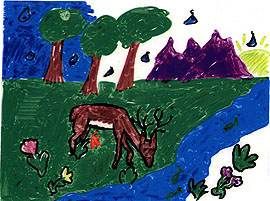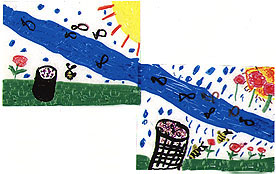|
Homewood Montessori School Fall 1997 Homework Visual arts Teacher-Mrs. Lucas 4th and 5th grade Teachers- Mrs. O'Brien and Ms. Layman by Homewood Montessori School 4th and 5th grade students October 22, 1997 What is (was) the steel industry in Pittsburgh?
What is (was) the steel industry
in Pittsburgh?
Andrew Carnegie introduced the Bessemer process. It used:
There is much less steel industry in Pittsburgh now. Wheeling Pittsburgh
is still making a lot of steel, though. Wheeling Pittsburgh is America's
ninth largest steel producer. In 1995, the company produced 2.2 million
tons of raw steel, shipped 25 million tons, and sales of the year totaled
$1.4 billion. (internet)
Steel is a hard and tough metal. It is made by treating iron with great
heat and mixing carbon with it. People have known for a long time how to
make steel, but it was always very expensive about 100 years ago. We learned
how to make a lot of steel cheaply. That's when the steel making industry
in Pittsburgh started. We had many steel mills in Pittsburgh. We sent steel
products all over the world. Safety pins, scissors, tall buildings and
automobiles are made out of steel. The air in Pittsburgh used to be very
dirty because of the gas that came from the furnaces in the mills. We leaned
how to clean up the air. Slag was dumped into river areas like Nine Mile
Run in Pittsburgh.
The steel industry used to be big in Pittsburgh, but now it barely exists.
Lots of things are made of steel such as: cars, buildings, furniture, pots
and pans, plumbing fixtures and many more things. Steel production causes
water and air pollution. It also leaves a residue called slag. Here are
some memories my grampa told me. About 50 years ago, men and women who
worked in downtown had to change their shirt at about noon, because they
were so dirty from the pollution. Also it was not unusual to turn on the
headlights at 11:00 a.m. because the pollution made it dark.
Pittsburgh Steel Company was founded in 1901 on the Monongahela River
southeast of Pittsburgh. Our city was once called the Steel City. It was
a very strong industry. Families had jobs and the city had a great deal
of smog. My neighbor retired from the steel mill after 30 years.
Slag is the momentary material in the process
of making pig iron, and in smelting copper, lead, and other metals. The
slag from steel blast furnaces contains sulfur and silicates of calcium,
magnesium, and aluminum. The slag from copper and lead smelting furnaces
contains iron, silicate, and oxides of other metals in small amounts.
Slag is little rock-like things that contain:
calcium, iron, aluminum, and magnesium silicate. (Encarta)
Slag is the waste left after the melting of ores
and the separation of the metal from them.
A view of Rosemont
When you make steel you mix iron ore with lime
stone and melt it. Then the ore goes to the bottom and the waste rock and
lime stone goes to the top and makes slag. Then they throw the slag in
a big pile.
Slag is the residue left by the smelting of metallic
ore. It doesn't hold water. Plants don't grow well in slag.
Slag looks like a rock with holes in it. It feels
bumpy. Slag was what was left after the fire in the steel furnace burned
the holes in it. The steel companies didn't know how to recycle the slag
so they just dumped it where Nine Mile Run is.
People think slag are rocks, but they are really
not. It is the left over materials when making steel.
Nine Mile Run is a stream off the Monongahela
River.
It is a valley located between Squirrel Hill and
Swissvale. It is damaged by slag dumped there over 50 years.
Nine Mile Run is near where we live. Nine Mile
Run used to be a creek just above the Monongahela River. Now it is a polluted
stream that runs between two mountains of slag. The Mayor and some other
people want to dig away the slag and build houses and parks. Other people
think it is too dangerous to dig away the slag because the dust can hurt
your lungs.
Nine Mile Run is an area near the Monongahela
River that was used by the steel mills for dumping for many years.
Nine Mile Run is a river in Squirrel Hill that
goes to the Monongahela River. It is also a name for big piles of slag
near there.
Nine Mile Run is a historic stream and valley
identified by Frederick Law Olmsted, Jr. in 1910 for its beauty as well
as its waste water problems. By 1923 the valley was selected by influential
Pittsburgers for a city park, but was subsequently purchased by a slag
disposal firm. Between 1922 and 1970 it was used as a dumping ground for
industrial slag from Pittsburgh area steel mills.
What is one of the goals of the Nine Mile Run Project?
One of the goals of Nine Mile Run is to restore
the environment.
To grow plants on the slag.
One of the goals of the Nine Mile Run Project
is to find a way to grow plants in the slag.
Watershed is a dividing (as a mountain range)
separating one drainage area from others, the whole area that drains into
a lake or river.
|
